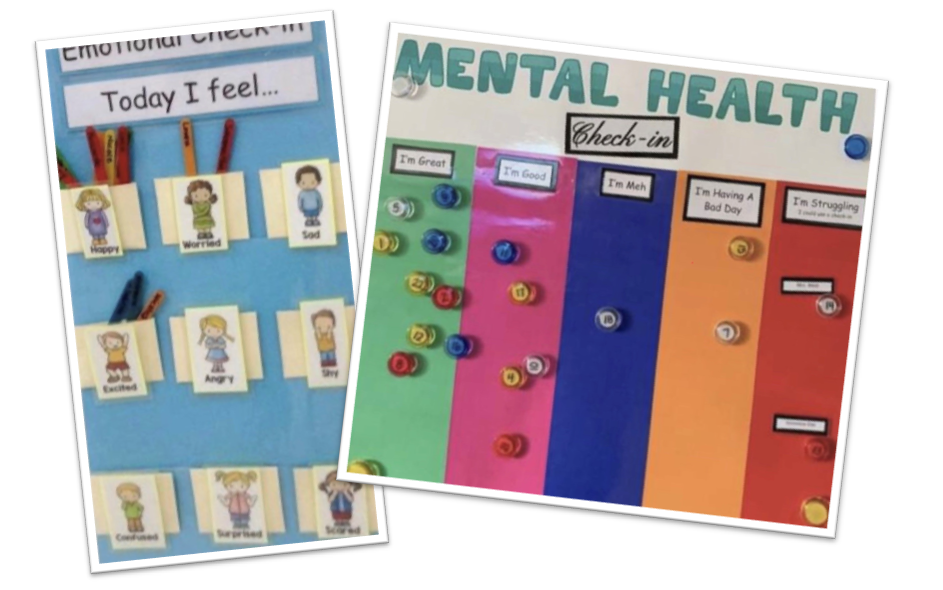Check in chart
Feelings can change over time. A check in chart can help you track the changing mood of the class and individuals over a day. A chart can be stuck along a desk or on a cupboard or a display board.
I have previously used four colours of laminated card to make stick on zones of green, yellow, orange & blue. Green represents ‘GREAT‘, yellow means ‘GOOD‘, orange represents ‘OK‘ and blue means ‘SAD’. I teach the kids at the start of the year what each colour means and we discuss the vocabulary of ‘feelings’.
Each morning they get to move a little round laminated piece of card with a number on it. The number correlates with their place in the class registration roll. By giving them a number, it makes the chart more anonymous and the children are more likely to stick the number on the space best representing how they feel.

As they put away their coats or put their drink at the sink, the children can walk over to the chart and stick their number where they feel. If a child does not want to choose a feeling, they can just stick their number at the side of the chart and move it later in the day if they wish.
This can be easily differentiated for younger classes with an emoji beside the word on the chart to support comprehension of the activity and decoding of the word. You could also just use the colours as a code for the feelings too.
TIP: If you wanted to incorporate Gaeilge, you can teach the colours to the children as Geailge.
I found other examples of such charts online and the creation of such a display together with the children could stimulate a lot of relevant discussion.

Some other chart examples
Good luck!
Roisin
Help Teachers’ Corner grow
If you have any feedback on this article, do let us know in the comments below or click the rating.
Do you have something you’d like to share? Get involved as a contributor.


Leave a Comment